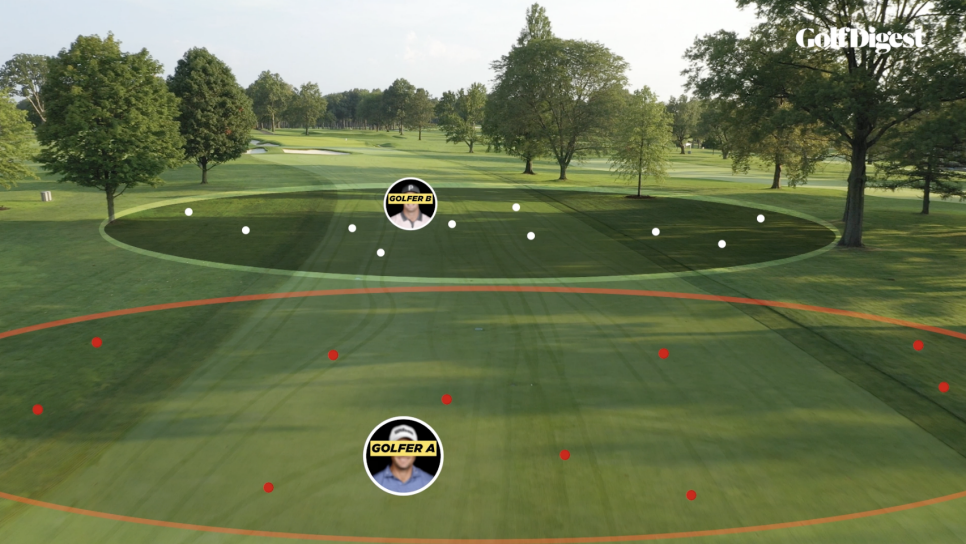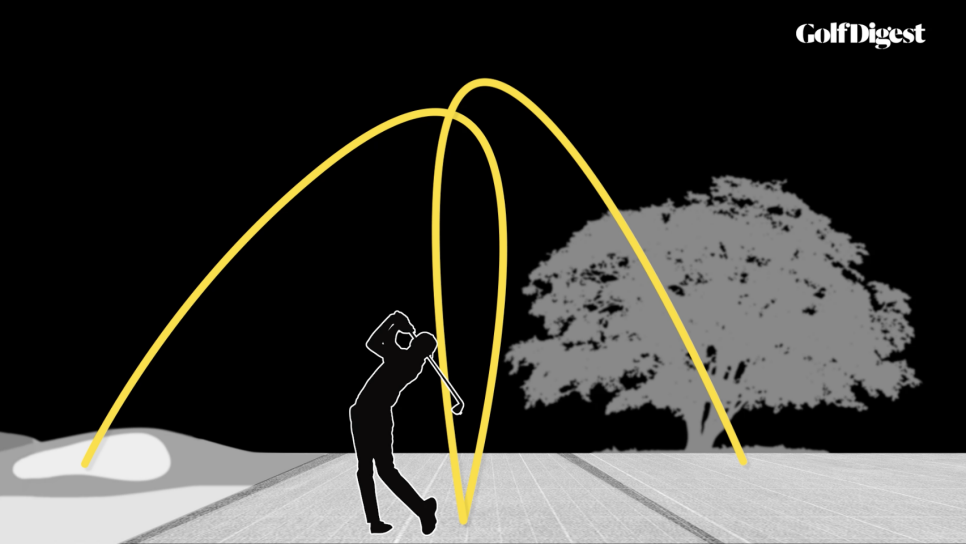It’s impossible to be a golf fan nowadays without hearing the word distance. It’s everywhere all the time, all at once. And you may find yourself wondering why. What is all the fuss about? Why is distance so important, and are people saying it’s too important?
While most people doubted that distance was important, it was never seen as a kind of catch-all solution. Distance was important, yes, but so was hitting fairways, and chipping, and putting.
Then one day, this guy came along. An economics professor from Columbia University called Mark Broadie. This guy is one of the smartest men in golf today.
Broadie discarded the crude old stats, things like total driving and fairways hit, and developed a slate of advanced analytics for golf and then began showing the world what they revealed.
In his book Every Shot Counts: Using the Revolutionary Strokes Gained Approach to Improve Your Golf Performance and Strategy, Broadie made his conclusion clear: that “putting is overrated”. Distance is king. And that the best strategy is one that is very, very aggressive off the tee. Even if it means missing more fairways. Bomb away, the maths is on your side – for pros and amateurs alike.
To understand why this is true, imagine two golfers.
There’s Golfer A, who ranks in the top third on tour in accuracy and the bottom third in distance.
And Golfer B, who ranks in the bottom third on tour in accuracy but the top third in distance.

If they both play the same hole 10 times, let’s call it a 450-yard par 4, Golfer A…
- Will hit his ball into the fairway six times and the rough four times.
- From 160 yards in the fairway, four of his six shots from will finish on the green, to an average of about 26 feet.
- Two of his four shots from the rough will find the green, for an average of 29 feet.
- Of the four shots that missed the green, he’ll get about two or three up-and-down.
Put it all together based on make and three-putting rates, and Golfer A will play this hole between even-par and one-over.
The longer-hitting Golfer B on the other hand…
- Will hit his ball into the fairway five times and the rough five times.
- From 20 yards closer (140), he’ll hit about four of those five shots onto the green for an average of 20 feet.
- He’ll hit half the five shots from the rough onto the green too, to about 26 feet.
So even though the longer golfer is hitting one less fairway than the shorter golfer, he’s hitting the same number of greens – and hitting it closer to the hole from both spots, because of that extra 20-yard distance gain.
Add it all up the same way, and Golfer B is playing it between even and one-under par. A small advantage, but one that adds up over time.

This isn’t just a pro golfer thing. It’s a principle that is even more true for amateur golfers like me and you. One recent analysis by golf stat tracking firm Arccos found that an average of 10 yards off the tee, regardless of accuracy, automatically leads to one stroke less on your scoring average.
That’s because amateur golfers are more inconsistent, even from perfect lies, so all things equal it’s just better to be closer.
That added inconsistency also means the disadvantage of being in the rough actually lessons for higher handicaps. In some strange cases, it actually disappears altogether. Pros may hate the unpredictability of fliers, but that ball being sightly teed up by the rough can often make life easier for amateurs.
Anyway this Golfer A–Golfer B is just one example of why the distance advantage is so important. It doesn’t account for things like par 3s, where all golfers are playing from the same spot, but the longer golfer has the luxury of hitting a shorter iron than the shorter hitter.
Or par 5s, which the longer golfer can start getting closer to the green in two than the shorter golfer.
Or how anyone can have a bad accuracy day and fall into a ball-striking slump, but nobody’s going to wake up one day and magically hit the ball 50 yards longer.
It’s also not entirely true that shorter hitters are automatically always straighter. Guys like Ludvig Aberg and Victor Hovland and Keith Mitchell are both longer and straighter than the tour average.
And while modern club technology plays a role, this would be true even with older equipment. Golfers like Ben Hogan, Arnold Palmer, Jack Nicklaus, Greg Norman and Tiger Woods. They were the best players of their era, and just look at how hard they swung at the golf ball. They were doing this; we just didn’t have any stats to realise it at the time.
The only way that stops working is when golfers start hitting lots of ‘wide’ balls, and by that we mean not behind a tree, or into a bunker so deep that you can’t get out of it, or into a water hazard or out-of-bounds.

Golfers like Nick Faldo used to tear their swings apart in a search for more accuracy, but now golfers are transforming their swings to squeeze out more distance, and it keeps working, over and over and over again.
It’s why you see coaches, pros and amateur golfers increasingly:
- Hitting the gym specifically for golf
- Trying to make faster backswings.
- Making wider backswings
- Ditching their backswing pauses
- Lifting their left heel
- Doing more speed training
It’s all in a pursuit of getting longer. Because it plays to the one ultimate truth in golf: that the closer you are to the hole, the more likely you are to hit your next shot into the hole. That’s true at the pro level, and it’s especially true at the amateur level.



